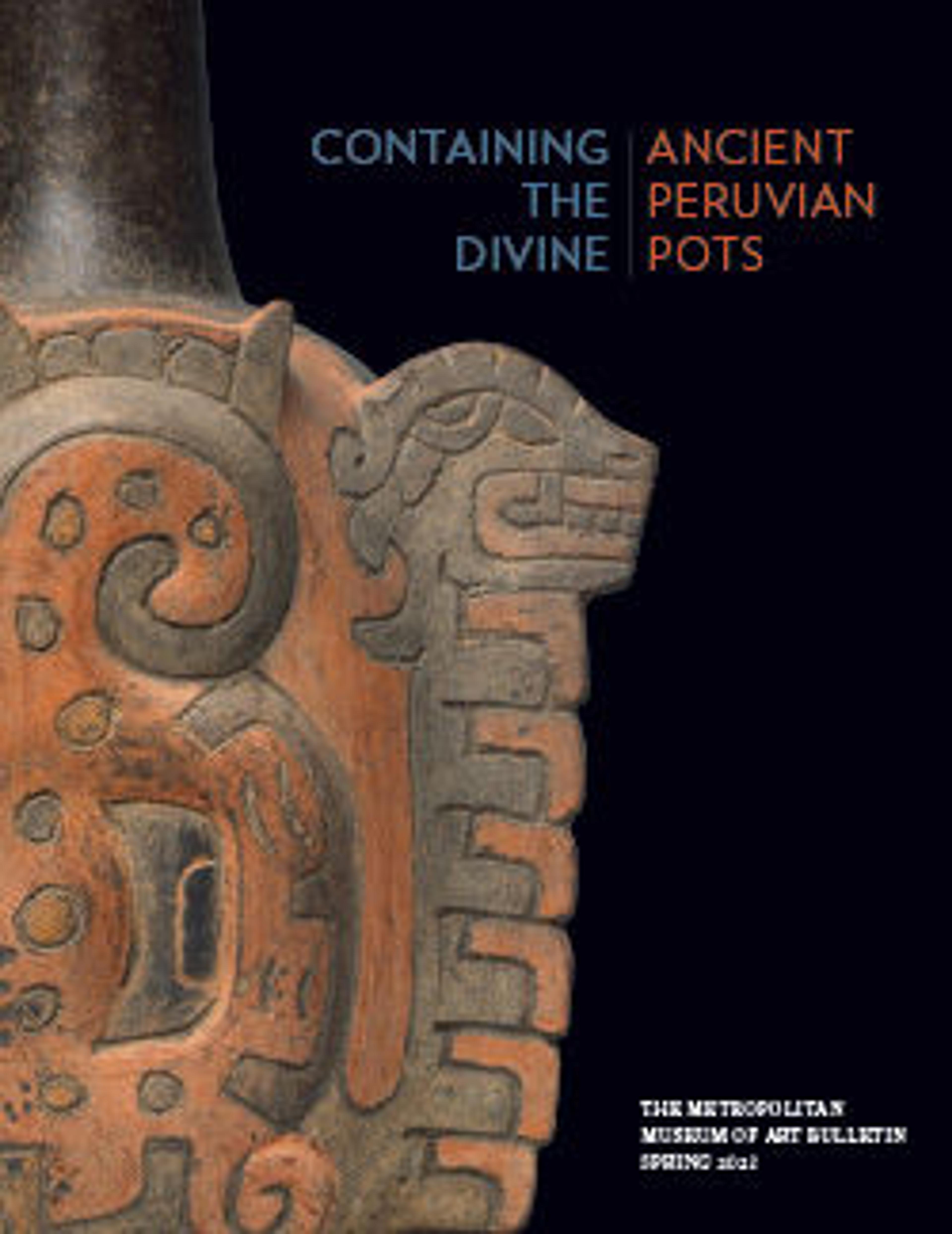Bowl
Although finely decorated Nazca vessels were made in specialized workshops, recent discoveries in small habitation sites show that the use of painted plates and open bowls was not limited to people living in monumental sites. These vessels were widely distributed among the population and used in households of any socioeconomic status. Plates and bowls were probably obtained during feasts, which gave opportunities to elites to enhance their own status by displaying and distributing prestigious crafts among the population. This bowl shows large raptorial birds decapitating human beings. The white background is filled with spears, zoomorphic heads, and circular objects interpreted as sling stones. The Nazca had a headhunting cult; caches of several trophy heads with carrying ropes have been discovered occasionally by archaeologists. The frequent depiction of severed heads is one of the most distinctive features of Nazca ceramic art. According to specialists of Nazca archaeology, heads were trophies of warfare that were obtained during territorial conflicts, and then used for ritual purposes. They were probably seen as sacred means for the control of water and agricultural fertility.
Artwork Details
- Title: Bowl
- Artist: Nasca artist(s)
- Date: 1–400 CE
- Geography: Peru, South Coast
- Culture: Nasca
- Medium: Ceramic, slip
- Dimensions: H. 3 3/8 x W. 5 1/2 x D. 7 3/4 in. (8.6 x 14 x 19.7 cm)
- Classification: Ceramics-Containers
- Credit Line: The Michael C. Rockefeller Memorial Collection, Purchase, Nelson A. Rockefeller Gift, 1961
- Object Number: 1978.412.63
- Curatorial Department: The Michael C. Rockefeller Wing
More Artwork
Research Resources
The Met provides unparalleled resources for research and welcomes an international community of students and scholars. The Met's Open Access API is where creators and researchers can connect to the The Met collection. Open Access data and public domain images are available for unrestricted commercial and noncommercial use without permission or fee.
To request images under copyright and other restrictions, please use this Image Request form.
Feedback
We continue to research and examine historical and cultural context for objects in The Met collection. If you have comments or questions about this object record, please contact us using the form below. The Museum looks forward to receiving your comments.
